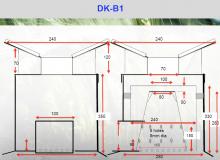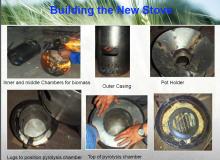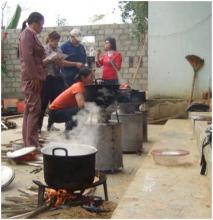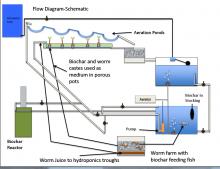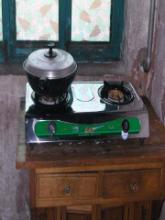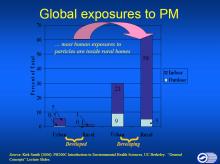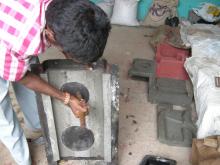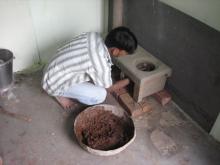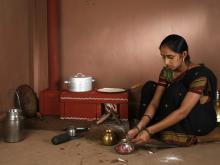New video and print resources available at www.aqsolutions.org.
Contamination of drinking water sources by synthetic organic compounds (SOCs – e.g. pesticides, pharmaceuticals, fuel compounds, etc.) is a growing worldwide problem. Many of these chemicals bio-accumulate in the human body and cause cancer, birth defects and diseases of the reproductive system, and disrupt endocrine and neurological systems. However, few low-cost, sustainable and appropriate treatment technologies are available to rural and developing communities for SOC removal.
Water filtration using charcoal is an ancient practice that continues today in non-industrialized regions around the world, though it has not yet been rigorously demonstrated for removal of modern industrial pollutants. Unfortunately, charcoal production by traditional kiln systems is often a resource-intensive and highly polluting process, and kiln processes are typically not optimized for production of good water filter char. Low cost, energy efficient, environmentally sustainable and scalable local production of optimal water filter char can be accomplished with biomass gasification (e.g. cookstoves and larger units using the TLUD design).
The video and print resources available on the Aqueous Solutions website (www.aqsolutions.org) are intended to
- summarize current results of collaborative field and laboratory research pertaining to the use of traditional kiln charcoals and gasifier chars in decentralized water treatment that targets SOCs,
- provide instructional materials for construction and operation of small- and intermediate- scale gasifier char production units using local materials, and
- provide instructional materials for integration of biochar filtration into a multi-barrier small- and intermediate- scale water treatment systems constructed from inexpensive and widely available materials.

